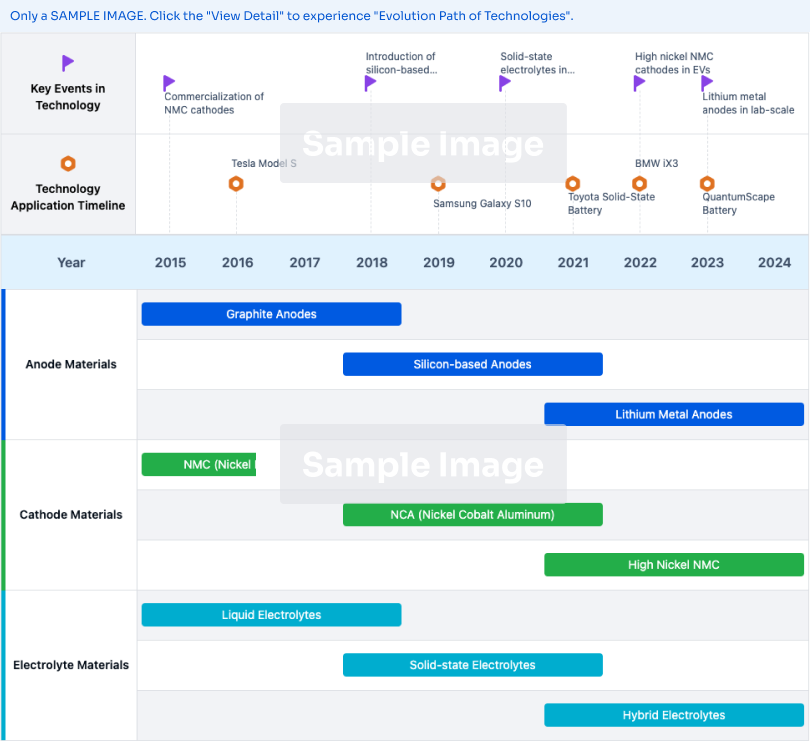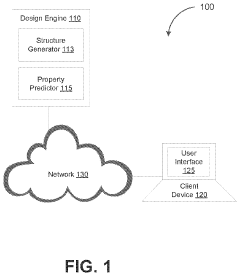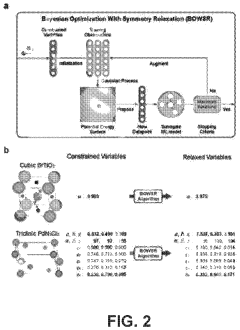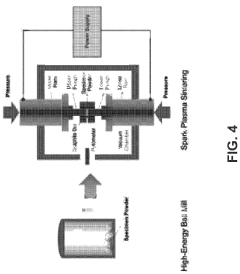Research on crystalline structure engineering for enhancing material properties - Eureka
Crystalline Structure Engineering Goals
Particular emphasis will be placed on elucidating the critical technological breakthroughs that have enabled precise control and manipulation of crystalline structures at various length scales, leading to the enhancement of desired material properties such as mechanical strength, optical response, electronic transport, and catalytic activity. The analysis will shed light on the current state-of-the-art techniques, as well as the remaining challenges and limitations that need to be addressed to unlock the full potential of crystalline structure engineering.
Market Demand for Enhanced Material Properties
- Growing Demand for Enhanced Materials
Advancements in various industries like aerospace, automotive, and electronics have fueled the need for materials with superior properties such as high strength, durability, and thermal resistance. - Emerging Applications
Emerging technologies like additive manufacturing, energy storage systems, and biomedical implants require materials with tailored properties to meet specific performance requirements. - Sustainability and Cost Optimization
The demand for materials that are environmentally friendly, energy-efficient, and cost-effective has increased, driving the need for material property enhancement. - Miniaturization and Lightweight Design
The trend towards miniaturization and lightweight design in electronics, transportation, and consumer products necessitates the development of materials with improved strength-to-weight ratios.
Current State and Challenges in Crystalline Engineering
- Current Challenges
Controlling crystal structure at the atomic level remains a significant obstacle. Precise manipulation of atoms and defects is crucial for tailoring material properties. - Synthesis Limitations
Conventional synthesis methods often lack the ability to achieve desired crystal structures, especially for complex materials with multiple components. - Characterization Difficulties
Advanced characterization techniques are needed to probe crystal structures at the nanoscale and understand structure-property relationships. - Computational Challenges
Accurate modeling and simulation of crystal growth processes and defect formation are computationally demanding, limiting our predictive capabilities. - Scalability Issues
Scaling up crystalline engineering techniques from laboratory to industrial scales can be challenging, hindering practical applications.
Evolution of Crystalline Structure Technologies

Existing Solutions in Crystalline Structure Engineering
01 High-strength and high-conductivity copper alloys
Copper alloys with carefully controlled compositions and processing techniques can achieve a combination of high strength and high electrical conductivity, suitable for applications like lead frames, conductive springs, and semiconductor equipment components.- High-strength and high-conductivity copper alloy materials: These materials combine high mechanical strength with excellent electrical conductivity, making them suitable for applications such as semiconductor equipment, conductive springs, and electrical components. The alloy composition and processing techniques are optimized to achieve the desired balance of strength and conductivity.
- Nanocrystalline copper and copper alloy materials: Nanocrystalline copper and copper alloy materials exhibit high hardness, strength, electrical conductivity, and toughness due to their fine-grained microstructure. These materials can be produced in powder or bulk form and find applications where high mechanical and electrical performance is required.
- High thermal conductivity and high-strength composite materials: These materials combine high thermal conductivity with excellent mechanical strength, making them suitable for applications where efficient heat dissipation and structural integrity are crucial. They can be metal matrix composites or other advanced composite materials designed for specific thermal and mechanical requirements.
- Conductive materials with enhanced mechanical properties: These materials aim to improve the mechanical properties, such as strength and wear resistance, while maintaining high electrical conductivity. They can be achieved through alloying, reinforcement, or surface treatments, and find applications in electrical contacts, brushes, and other conductive components subjected to mechanical stress.
- Materials with tailored optical and electrical properties: These materials are designed to exhibit specific optical and electrical properties, such as broadband luminescence or high magnetic conductivity. They can be achieved through careful material selection, doping, or nanostructuring, and find applications in optoelectronics, sensors, and electromagnetic devices.
02 Nanocrystalline copper and copper alloys
Nanocrystalline copper and copper alloy materials exhibit high hardness, strength, electrical conductivity, and toughness due to their fine grain structure, produced through powder metallurgy or severe plastic deformation techniques.03 High-performance aluminum alloys
Aluminum alloys with specific alloying elements and processing methods can achieve a combination of high strength, thermal conductivity, and electrical conductivity, suitable for lightweight and high-performance applications.04 Conductive composite materials
Composite materials incorporating conductive fillers or reinforcements can exhibit improved electrical and thermal conductivity while maintaining or enhancing other properties such as strength and wear resistance.05 Broadband luminescent materials
Crystalline materials can be engineered to exhibit broadband luminescence properties in the infrared or other spectral regions, enabling applications in optoelectronics, sensing, and imaging.
Key Players in Material Engineering
Semiconductor Manufacturing International (Shanghai) Corp.
SK hynix, Inc.
Core Innovations in Crystalline Engineering
- The application of machine learning techniques for material design, specifically in the generation of equilibrium crystal structures and the identification of candidate materials for synthesis. by utilizing a first machine learning model, the system is able to iteratively search a solution space to find variations of a given crystal structure with minimum formation energy, thereby predicting the equilibrium crystal structure. this approach streamlines the material design process by automating the evaluation of material properties and identifying potential candidates for synthesis.furthermore, the incorporation of bayesian optimization (bo) models enhances the efficiency and accuracy of the machine learning process. the constraints applied to the solution space search, such as symmetry considerations and lattice parameters, contribute to the precision of the predictions made by the system.
- The ability to compare formation energies of different variations of the crystal structure allows for the selection of the most stable and promising candidates for further exploration.
Potential Breakthroughs in Material Properties Enhancement
- Nanostructured Materials
- Grain Boundary Engineering
- Epitaxial Growth and Heterostructures










